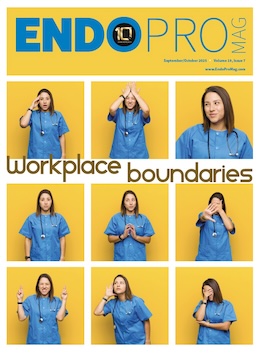Rates of colorectal cancer incidence and death in California have declined significantly for men and women in all large racial-ethnic groups since 1990, with the exception of Hispanic men.
Rates of colorectal cancer among Hispanic men have remained fairly constant, a disparity that can be reduced through increased screening, a report on trends in colorectal cancer by the UC Davis Institute for Population Health Improvement (IPHI) has determined.
The research, “Colorectal Cancer Trends in California and the Need for Greater Screening of Hispanic Men,” was published online July 29 in the American Journal of Preventive Medicine.
“Regular screening for colorectal cancer allows doctors to catch tumors and polyps early, preventing invasive cancer and death,” said IPHI Director Kenneth W. Kizer, study’s senior author. “But Hispanics are less likely to be screened, insured, and receive health care than other ethnic groups in California.”.
In reality, the screening rates of Mexican and South and Central American Hispanic men, the predominant Hispanic subgroups in California, are the lowest rates for any race/ethnic group in the nation. Adapting interventions to the targeted populations’ needs are crucial in order to develop useful prevention interventions and enhance health,” he said.
As reported by the National Cancer Institute, in 2014 only 46.2 percent of Hispanic men in the U.S. and 44.9 percent in California were screened compared to 67.6 percent of white men in the U.S. and 72.4 percent in California.
For the study, IPHI researchers from the California Cancer Reporting and Epidemiologic Surveillance (CalCARES) program reviewed California Cancer Registry data for 23,157 Hispanic and 114,944 white men diagnosed with invasive colorectal cancer between January 1990 and December 2012. They identified trends in incidence, mortality and five-year relative survival by age, stage of diagnosis and tumor location.
The researchers determined that although both groups had the same trends in survival and stage at diagnosis over time, white men had incidence of and mortality from colorectal cancer substantially lower in all age groups, especially those 50 years of age and older. Incidence of colorectal cancer in white men decreased from 71.5 in 1990 to 49.1 in 2009, and to 41.3 in 2012, and overall death decreased 46 percent. In contrast, the incidence rate among Hispanic men rose between 1990 and 2008, from 43.2 percent to 49.1 percent, and fell subsequently to 39.1 percent in 2012, while overall mortality fell by merely 3.5 percent.
Hispanic men also had a much higher percentage (65 percent) of distal colon tumors than white men (59 percent). Since screening for colorectal cancer is particularly good at detecting distal tumors, those near the rectum, more Hispanic men may be benefiting from this established preventive procedure.
Although screening rates among Hispanic men have risen in recent years, it is unclear whether this trend will continue,” Kizer said.
The research also discovered that the prevalence of both white and Hispanic men aged less than 50 with colorectal cancer — though small in comparison with the other age ranges — rose sharply. Existing screening guidelines do not start until the age of 50, but these observations fuel concerns that screening for colon cancer, particularly in groups with a higher risk, should begin earlier, Kizer said.
Colorectal cancer is the third most prevalent cancer in the United States and second most frequent cause of cancer-related death among men and women, as stated by the U.S. Centers for Disease Control and Prevention. Colorectal cancer death from 1990 through 2013 for all men in California dropped from 26.9 to 15.2 per 100,000 and from 18.5 to 11.23 deaths per 100,000 women.







